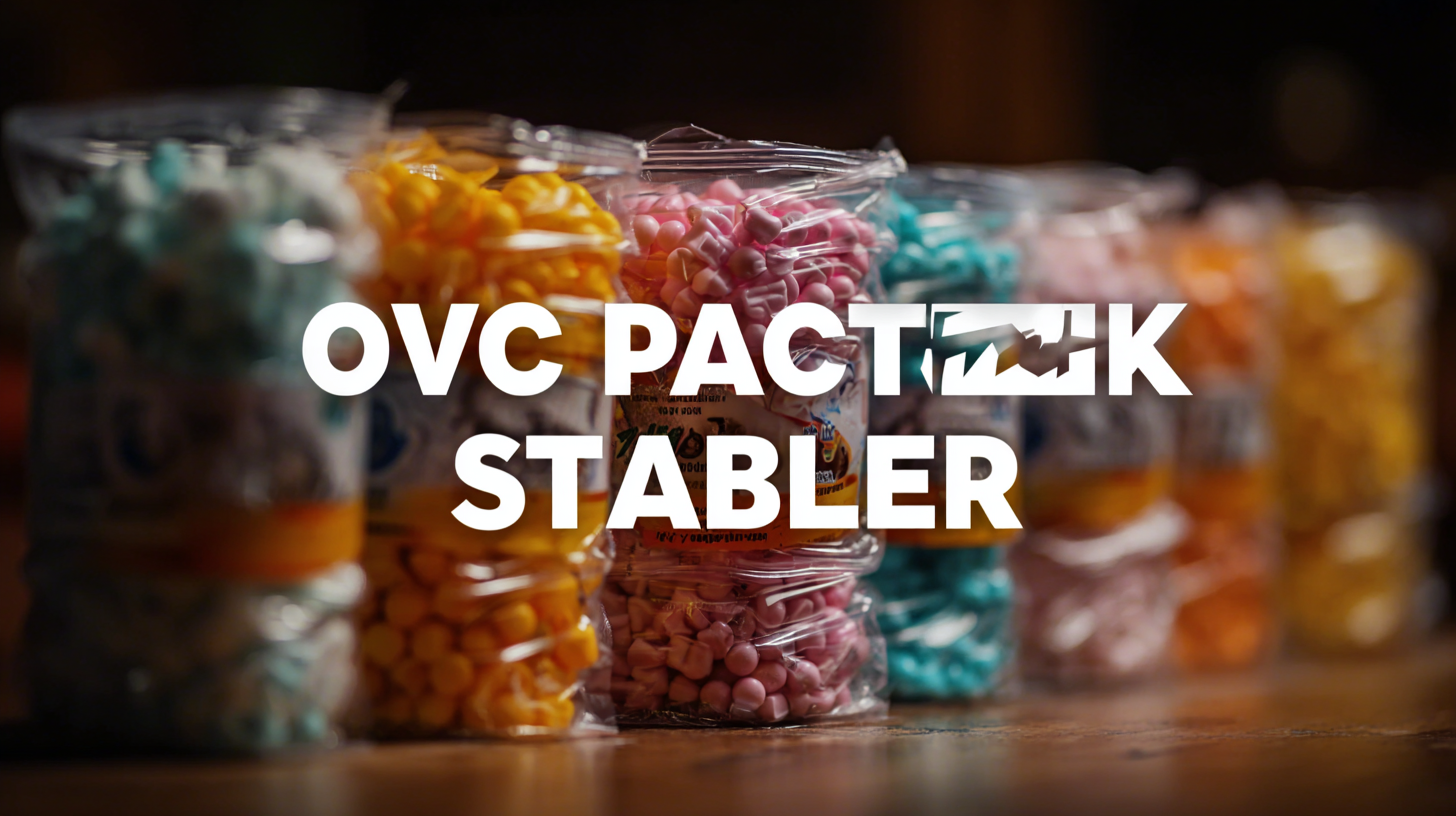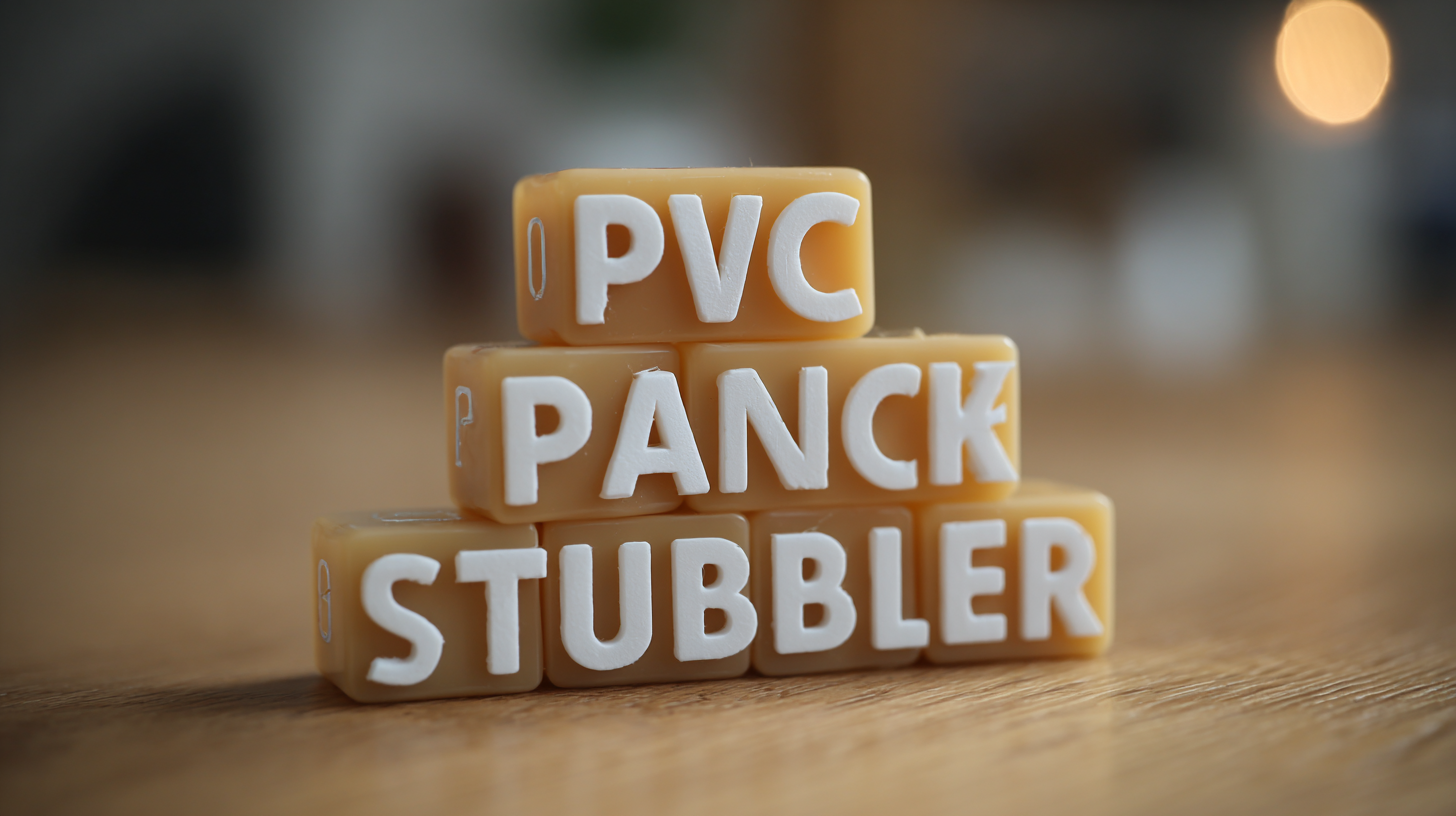
The Ultimate Guide to Choosing the Best PVC One Pack Stabilizer for Your Projects
In today's competitive manufacturing landscape, the importance of choosing the right materials for your projects cannot be overstated. Among these materials, the PVC One Pack Stabilizer has emerged as a critical component in ensuring the durability and performance of PVC products. According to a recent industry report by MarketsandMarkets, the global market for PVC stabilizers is projected to reach USD 1.2 billion by 2025, highlighting the growing demand for effective stabilization solutions across various applications, from construction to automotive sectors. As manufacturers strive for quality, efficiency, and sustainability, understanding the nuances of PVC One Pack Stabilizers becomes essential. This guide aims to equip you with the necessary insights and practical applications to help you make informed decisions for your projects, ultimately maximizing performance and meeting industry standards.

The Importance of Choosing the Right PVC One Pack Stabilizer for Project Success
In today's rapidly evolving chemical industry, selecting the right materials for projects is crucial for success. The choice of a PVC one pack stabilizer can significantly influence the performance and longevity of the final product. Research indicates that improper stabilizer selection can lead to a decrease in thermal stability and an increase in discoloration, ultimately affecting the quality of manufactured goods. In fact, the global market for PVC stabilizers is projected to grow at a CAGR of 4.5% from 2021 to 2026, underscoring the growing importance of this component in various applications.

Moreover, advancements in polymer technology and the increasing demand for sustainable materials are compelling manufacturers to adopt high-performance stabilizers. According to data from industry reports, nearly 30% of the total cost in PVC production can be attributed to the choice of stabilizers. Therefore, understanding the diverse functionalities and compatibility of available stabilizers is essential for minimizing costs while maximizing product efficacy. As highlighted by recent initiatives in new materials innovation, entities focused on stabilizer selection are poised to drive significant advancements in chemical engineering and contribute to overall project success.
Key Properties of PVC Stabilizers: Understanding Performance Metrics and Standards
When selecting a PVC one pack stabilizer for your projects, understanding the key properties and performance metrics is crucial for achieving optimal results. The effectiveness of stabilizers is typically assessed by their ability to provide thermal stability, impact resistance, and resistance to UV degradation. According to a report by Grand View Research, the global PVC stabilizers market is projected to reach USD 3.5 billion by 2026, indicating the growing importance of these additives in the production of durable and reliable PVC products.
One vital performance metric to consider is the stabilizer’s compatibility with various PVC formulations. For instance, stabilizers containing lead and barium have historically been effective but are being phased out due to environmental concerns. In contrast, calcium-zinc stabilizers are gaining traction due to their non-toxic nature and excellent stabilization properties, making them preferable for consumer products. A study from the American Chemical Society highlights that formulations using calcium-zinc stabilizers can achieve up to 30% improvement in thermal stability when compared to traditional stabilizers, underscoring the need for modern alternatives in sustainable PVC production.
Another important aspect is the standardization of performance metrics. The European Committee for Standardization (CEN) has established guidelines for testing the performance of PVC stabilizers, focusing on metrics such as heat stability time and viscosity. Adhering to these standards not only ensures consistent quality and performance but also enhances the marketability of PVC products in regions where compliance is mandatory. By prioritizing these key properties, manufacturers can optimize their formulations and meet both industry standards and consumer expectations.
Comparative Analysis: Various Types of PVC One Pack Stabilizers in the Market
When it comes to selecting the right PVC one pack stabilizer for your projects, a comparative analysis of various types available in the market is essential. PVC one pack stabilizers offer a unique solution to improve the thermal stability of polyvinyl chloride during processing and end-use applications. However, not all stabilizers are created equal. The primary categories to consider include calcium zinc stabilizers, lead stabilizers, and organotin stabilizers, each with its own advantages and drawbacks.
Calcium zinc stabilizers are a popular choice due to their non-toxic nature and effectiveness in both rigid and flexible PVC applications. They are highly regarded for their environmental friendliness, making them ideal for products meant for sensitive uses, such as toys or medical devices. On the other hand, lead stabilizers provide exceptional thermal stability but come with regulatory challenges related to toxicity. Meanwhile, organotin stabilizers are known for their excellent processing performance but can raise environmental concerns due to their potential harmful effects. Therefore, evaluating these options based on project requirements, regulatory constraints, and environmental impacts is crucial for making an informed decision.
The Ultimate Comparison of PVC One Pack Stabilizers
Impact of Stabilizer Formulation on PVC Material Longevity and Durability
When selecting a PVC one pack stabilizer, understanding the impact of its formulation on the longevity and durability of the final product is crucial. Different stabilizer components can significantly alter the thermal stability and resistance to environmental stressors. For instance, a stabilizer rich in calcium-zinc typically offers excellent UV resistance, making it ideal for outdoor applications where prolonged exposure to sunlight is expected. On the other hand, lead-based stabilizers, although effective, are progressively being phased out due to environmental legislation, pushing manufacturers towards safer, more sustainable alternatives.
 Moreover, the choice of stabilizer can influence the physical properties of PVC products, such as impact resistance and flexibility. A well-formulated stabilizer not only enhances the durability of the PVC but also ensures consistency in its performance over time. Factors such as processing temperatures and the specific application of the final product must also be considered, as they can further determine the effectiveness of the stabilizer used. In project planning, opting for the right PVC one pack stabilizer can mean the difference between a product that stands the test of time and one that deteriorates prematurely.
Moreover, the choice of stabilizer can influence the physical properties of PVC products, such as impact resistance and flexibility. A well-formulated stabilizer not only enhances the durability of the PVC but also ensures consistency in its performance over time. Factors such as processing temperatures and the specific application of the final product must also be considered, as they can further determine the effectiveness of the stabilizer used. In project planning, opting for the right PVC one pack stabilizer can mean the difference between a product that stands the test of time and one that deteriorates prematurely.
Cost-Effectiveness of PVC Stabilizers: Balancing Quality and Budget for Optimal Results
Choosing the right PVC one-pack stabilizer for your projects involves a careful balance between quality and budget. While it may be tempting to select the cheapest option available, this can lead to compromised performance and durability of your final product. A thoughtful analysis of cost-effectiveness is essential to ensure you achieve optimal results without overspending.
When evaluating PVC stabilizers, consider the long-term benefits of investing in higher-quality products. They may come with a higher initial cost, but a reliable stabilizer can enhance the longevity and stability of your PVC applications, ultimately saving you money on replacements and repairs. Always assess the performance data provided by manufacturers to make an informed choice that aligns with your budgetary constraints.
Tips:
- Research and compare several brands to find one that offers the best balance of price and performance based on your specific project needs.
- Read reviews and case studies from other users to gain insights into the effectiveness of different stabilizers.
- Test small quantities of different stabilizers to see which performs best in your projects before committing to larger orders.

